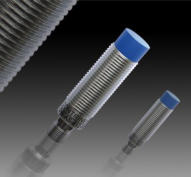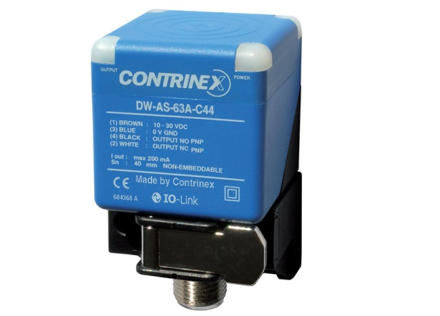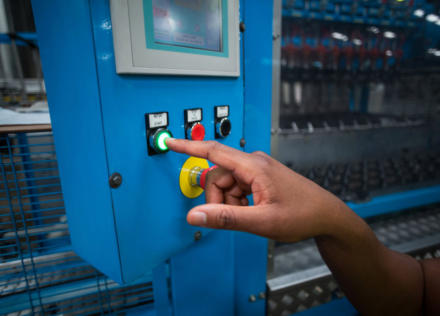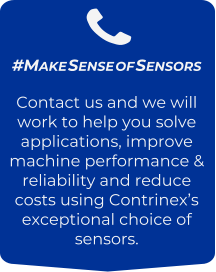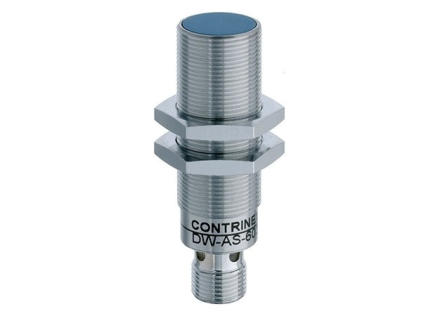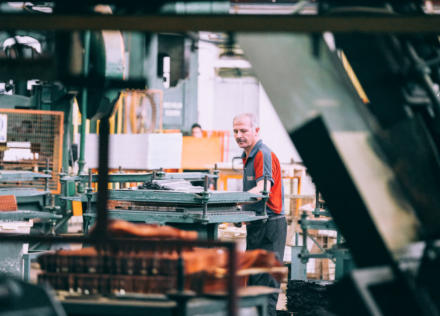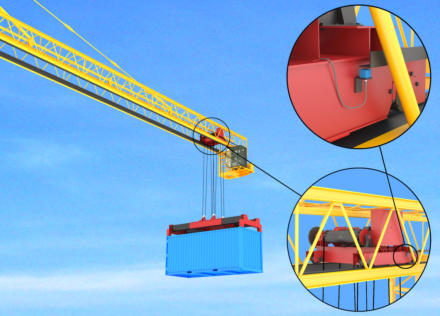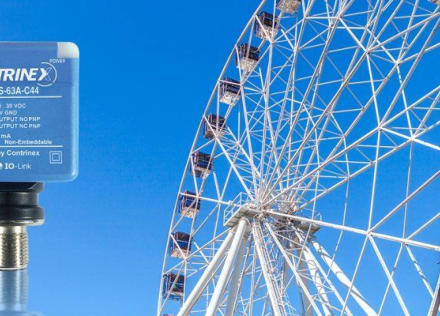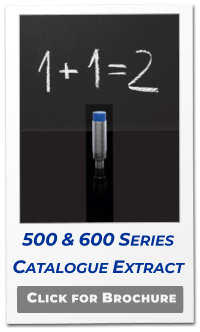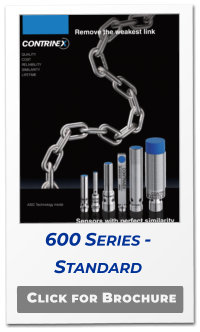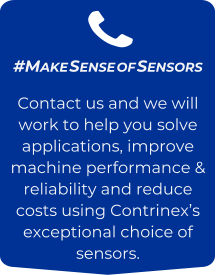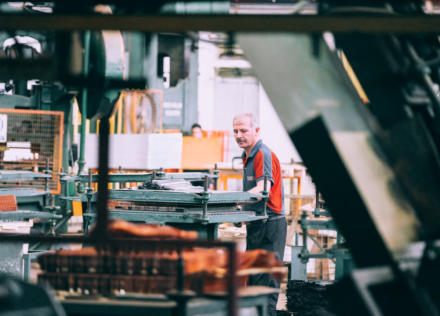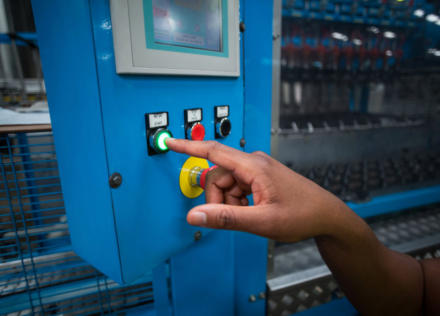(0121) 58 222 58 SALES@PLUSAUTOMATION.CO.UK

© 2021 - PLUS AUTOMATION LIMITED®

HELPING YOU #MAKE SENSE OF SENSORS





EXAMPLE APPLICATIONS
TO ILLUSTRATE THE WIDE-VARIETY OF APPLICATIONS SOLVED USING CONTRINEX SENSORS, WE HAVE POSTED A LARGE SELECTION OF EXAMPLE APPLICATIONS WHICH CAN BE SEEN BY CLICKING ON AN IMAGE. BELOW ARE A SELECTION OF SOME OF THESE APPLICATIONS:



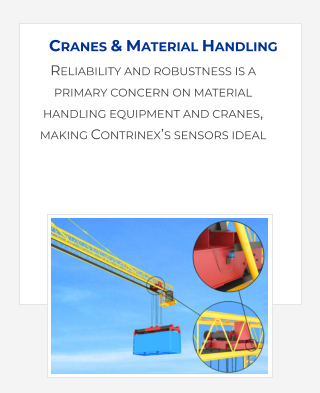
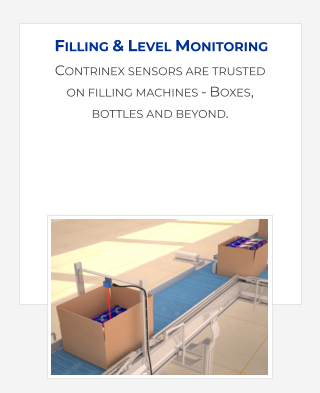
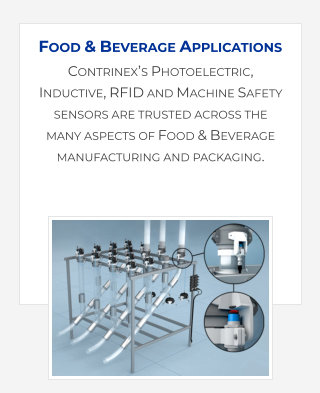
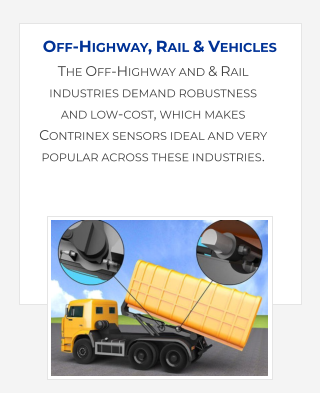
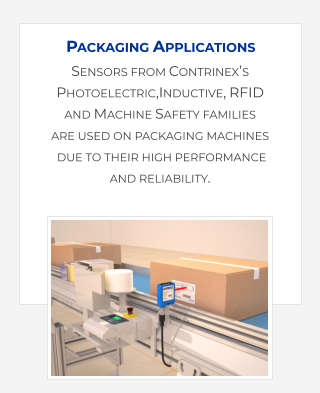
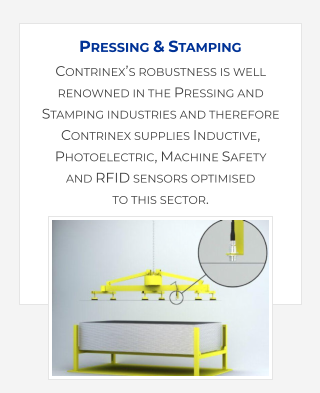
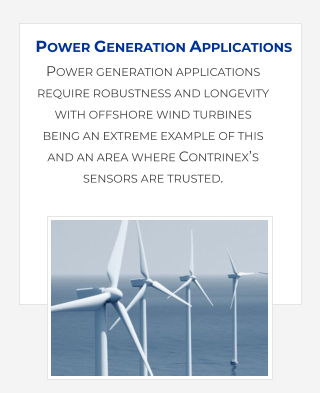
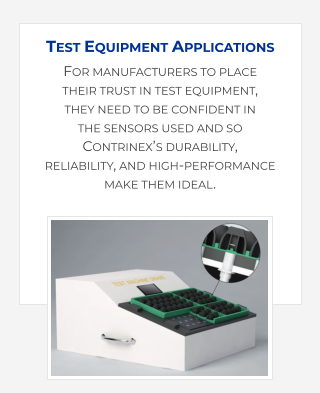

CUSTOMER VALUES
COST EFFECTIVE SOLUTION
SETUP TIMES REDUCED AND WORKLOADS RATIONALISED
EFFICIENT AUTOMATIC MANIPULATION OF MOULDING TOOLS
AVOIDANCE OF PRODUCTION FAULTS, DAMAGE TO TOOLS OR
PRESS AND RESULTING DOWNTIME
PROCESS SPEED AND CONSISTENCY ASSURED
PRODUCT ADVANTAGES
ROBUST CONSTRUCTION
PROVEN RELIABILITY
HIGH SWITCHING ACCURACY
IO-LINK INTERFACE INCLUDED – IDEAL FOR INDUSTRY 4
Automated presence and position checking of tools reduces
the set up times for hydraulic presses, improving machine
availability and utilisation.
CUSTOMER APPLICATION
The automotive industry uses automation extensively and an
automobile manufacturer wanted to automate the presence
and position checking of tools within their hydraulic presses.
The conventional downward-acting hydraulic presses are
equipped with sliding tables that hold the upper and lower
tools in position and allow them to be changed.
Automatic checking is required to ensure that both tool halves
are correctly positioned on the sliding table as they are being
prepared. Incorrect tool position, or absence of tool, can cause
damage or failure.
CUSTOMER SOLUTION
Contrinex’s cubic 40 x 40 x 40mm C44 inductive sensors from
their Basic 600 Series solve this application, due to their robust
industrial construction, proven reliability of its sensing
capabilities, high-performance, a choice of 15 to 40 mm
sensing distances and low-cost.
A sensor is installed on one corner of the sliding table and
adjusted to confirm the presence of a correctly positioned tool.
The accuracy in switching distance of this sensor means that
any deviation in tool position is detected. An incorrectly
positioned tool will therefore immediately trigger a process
stop. This position/absence check takes place with all the
speed expected from an automated factory process.
By preventing the presses from proceeding to the molding
process with incorrectly positioned or absent tools, this
automatic tool change sensor helps prevent production faults,
reduce downtime and avoid damage to the presses
themselves.

CUSTOMER VALUES
IMPROVED CONFIDENCE AND SAFETY
EASE OF INTEGRATION INTO ROBOTIC SYSTEM
DETECTION THROUGH A BARRIER FOR EASIER CLEANING
NO MECHANICAL CONTACTS
PRODUCT ADVANTAGES
LONG OPERATING DISTANCE
ROBUST AND RELIABLE SWITCHING
SMALL SIZE
Laparoscopic surgery has started using robot-assistance and a
key issue these systems face is ensuring that the correct
length and diameter of cannula or trocar has been loaded into
the robotic manipulator before insertion into the body cavity.
CUSTOMER APPLICATION
To perform robot-assisted laparoscopic surgery, the surgeon
sits at a computer console viewing a 3-D image of the surgical
field and guiding surgical instruments via joy-sticks. The
improved depth perception and rotational movement
provided by a robot has extended laparoscopic surgery to
more complex procedures. These require cannulas of many
different types, each individually identified by ridges and
grooves machined into the area clamped by the robotic
member.
If the wrong cannula type is fitted it may be too small for the
tools required or too large for the intended procedure, with
potential harm to surgical outcomes. It is therefore essential
that the robotic system should check the cannula before
allowing the surgeon to proceed with surgery.
A non-contact solution is required. Space constraints around
the robot also make small size essential.
CUSTOMER SOLUTION
Contrinex’s ‘Basic’ range of inductive sensors (600 series), are
installed into the clamping block of the robotic member and
utilise their high-performance sensing capability to detect the
presence of machined ridges and grooves in the cannula.
The groves provide a binary code that identifies the specific
dimensions and profile of the cannula loaded. Detection is
accomplished through the wall of the mounting block,
isolating the sensors from the surgical device.
Space constraints require these 6.5 mm diameter sensors are
mounted side by side with no spacing, essentially violating
mounting rules. To avoid the possibility of cross talk or mutual
interference the sensors are powered on and off sequentially
and their output status monitored.
Sensor data delivered to the control system allows the surgeon
to proceed with confidence that instrument movements
within the patient’s body will be dimensionally correct and the
internal size of the cannula is sufficient for entry of the surgical
tools required.

CUSTOMER VALUES
RELIABLE SENSING OF HOIST-CARRIAGE POSITION IN BUSY
CONTAINER SEAPORT
SIGNIFICANT REDUCTION IN CRANE DOWNTIME
MARKED DECREASE IN MAINTENANCE COSTS FOR
REPLACEMENT SENSORS
PRODUCT ADVANTAGES
IP68 AND IP69K RATING
COST-EFFECTIVE HIGH-PERFORMANCE SENSOR WITH
EXCEPTIONAL RELIABILITY
SENSING DISTANCES UP TO 40MM IN INDUSTRY-STANDARD
40 X 40MM HOUSING

CUSTOMER VALUES
COST EFFECTIVE SOLUTION
SETUP TIMES REDUCED AND WORKLOADS RATIONALISED
EFFICIENT AUTOMATIC MANIPULATION OF MOULDING TOOLS
AVOIDANCE OF PRODUCTION FAULTS, DAMAGE TO TOOLS OR
PRESS AND RESULTING DOWNTIME
PROCESS SPEED AND CONSISTENCY ASSURED
PRODUCT ADVANTAGES
ROBUST CONSTRUCTION
PROVEN RELIABILITY
HIGH SWITCHING ACCURACY
IO-LINK INTERFACE INCLUDED – IDEAL FOR INDUSTRY 4
An automated tool-change process reduces setup times and
improves machine efficiency, but introduces the risk of
damage if the tool-press is not completely closed before its
moulding tools are changed.
Therefore a Contrinex inductive sensor is trusted to ensure that
the tool-press is completely closed, so that the moulding tools
can be changed safely and efficiently.
CUSTOMER APPLICATION
Hydraulic presses that are used to mould automotive body
parts have had their tool change automated.
The down-acting hydraulic presses which are common in
many industries, feature rams that hold the upper tool half in
position as they press down on the lower half.
To change tooling requires the detachment of the upper tool
half from the ram, putting it into the lower half, and sliding
both out of the press. Before the ram releases the top half for
any tool change, the tool pair must be in the closed position.
This ensures that both tool halves are perfectly aligned when
the automatic tool-change process starts, avoiding damage to
either tool or press and any consequent downtime.
CUSTOMER SOLUTION
The Contrinex DW-AS-603-M18-002 inductive sensor meets
the requirements of this application, due to its robust
industrial construction and the proven reliability of its sensing
capabilities - There is also the benefit that it is from Contrinex’s
lowest priced, ‘Basic’ ‘600’ series of inductive sensors.
A single sensor is mounted using an angle bracket on the
lower tool housing. Directly above it, a matching bracket on
the upper housing serves as the reference surface. Before
enabling tool release, this sensor is checked. Since the target
does not enter the switching range until the tool is fully closed,
premature tool release is prevented.
The accuracy in switching distance of these sensors means
that the upper tool half is only released when the tool is fully
and correctly closed.
The checking process is quick and reliable and prevents the
press from proceeding to the tool-change process with
incorrectly closed tools, to avoid downtime and damage to
tools and the press.
CUSTOMER SOLUTION
Contrinex’s ‘Basic’ range of inductive sensors are highly suited
for this application. Mounted in rugged 40 x 40mm polyamide
glass-fibre housings, these devices from the ‘Classics’
technology family utilised a 20mm sensing distance that
eliminates the risk of collisions. A 40mm sensing distance is
also available for this sensor if needed and its IP68 / IP69K-
rating makes it ideal for the outdoor working environment,
even in a seaport.
The use of industry-standard housings for these Contrinex
sensors ensures that they are drop-in replacements for
competitor’s devices. No modification to the mounting
arrangements was necessary, incurring little downtime during
the changeover to the new sensing arrangements.
Communication with the crane’s control system is via a PNP
changeover interface, replacing the existing two-wire
arrangement; a flexible PUR-sheathed cable provides the
electrical connection. The new sensor features an integral S12
connector, allowing easy removal and replacement for
maintenance.
A step improvement in operational performance was evident
immediately after the new units were installed. The new
sensors provide reliable sensing of each hoist’s position with
no reported collisions since the date of installation. The
customer has reported a marked reduction in crane downtime
with an associated decrease in expenditure on replacement
sensors.
Container-handling cranes in Britain’s busy seaports operate
around the clock relying upon Contrinex’s rugged inductive
sensors on each hoist carriage to detect its position with
respect to the crane structure and prevent it travelling outside
preset limits. Because mechanical play in the hoist carriage
allows a small amount of lateral drift as it travels along the
crane structure, Contrinex’s long sensing distance is essential
to prevent the sensor colliding with the crane structure.
CUSTOMER APPLICATION
Loading and unloading containers in a busy British seaport is a
24-hour activity, all year round, with optimum utilisation of
storage space being essential to achieve maximum operating
efficiency.
Container-handling cranes operate above a storage area,
positioning containers before lowering them into place. The
hoist carriage on each crane travels along the length of the
crane structure, traversing the width of the storage area to
achieve complete coverage of the available storage space.
Sensors fitted to the hoist carriage detect the ends of the
structure, cutting power to the drive-motors and preventing
the carriage from travelling beyond allowable limits.
Mechanical play in the drive system results in the carriage
drifting laterally as it travels along the crane structure. The
15mm sensing range of a competitor’s sensors were
inadequate; occasionally causing sensors to collide with the
crane’s structure, causing damage and interrupting operation.
Better inductive sensors with increased sensing range are
needed to prevent collisions.

CUSTOMER VALUES
FAST AND EASY UPGRADE OF MECHANICAL LIMIT SWITCHES
TOOL-FREE MOUNTING
ROTATABLE SENSING FACE, MOUNTABLE IN FIVE DIRECTIONS
SIGNIFICANT REDUCTION IN DOWNTIME
PRODUCT ADVANTAGES
LONG OPERATING DISTANCE UP TO 40 MM
HIGHLY FLEXIBLE, RELIABLE AND ECONOMICAL
SUITABLE FOR HARSH ENVIRONMENTS AND TEMPERATURES
FROM -25°C TO +85°C
LONG LIFE, ESPECIALLY IN APPLICATIONS WITH TEMPERATURE
FLUCTUATIONS AND VIBRATIONS
HIGH SWITCHING FREQUENCIES, RELIABLE SWITCHING
CHANGEOVER OUTPUTS
4 LED INDICATORS• IO-LINK INTERFACE
Contrinex’s ‘Basic’ ‘600’ range of inductive sensors don’t
require compromise, aside from accepting a low-price – Their
rugged C44 inductive sensors, for example, offer a sensing
range of up to 40mm in a small cubic 40x 40mm, IP68/ IP69K-
rated polyamide glass-fibre housing. High performance, an
extended operating temperature of -25°C to +85 °C and a long
sensor life, make them ideal for an outdoor working
environment, such as keeping a Ferris wheel turning.
Utilising a housing design which makes it interchangeable
with common mechanical limit switches and competitors
inductive sensors, it also features a rotatable sensing head,
which can be turned in five directions giving extraordinary
mounting flexibility. Installation is also made easier with tool-
free mounting and bright LEDs on four corners to indicate the
operating status.
An integral S12 connector allows for easy removal and
replacement for maintenance and the IO-Link communication
protocol included in the sensor, facilitates easy Industry 4 / IIoT
connection.
The Contrinex C44 inductive sensor is not only ideal for
fairground rides, but is also widely used in the automotive
industry, conveyor systems, cranes and port facilities, plus a
wide variety of machinery.
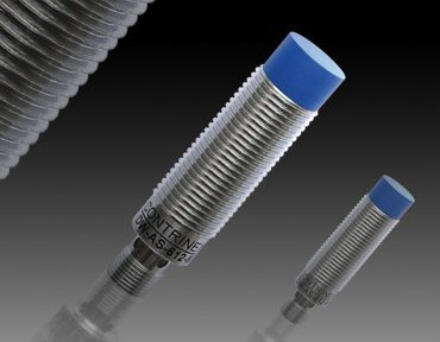
600 SERIES INDUCTIVE SENSORS - EXCELLENT PRICE PERFORMANCE RATIO

PRODUCT ADVANTAGES
THE ECONOMIC INDUCTIVE SENSOR FAMILY - EXCELLENT PRICE
PERFORMANCE RATIO
A LARGE VARIETY OF PRODUCT SHAPES AND SIZES
A CHOICE OF SENSING DISTANCES (PLUS THE SISTER 500
SERIES OFFERING FURTHER EXTENDED SENSING DISTANCE
AND THE MINIATURE FAMILY PROVIDING SMALLER SIZES)
DEVIATION IN OPERATING DISTANCE ≤2%
OUTSTANDING TEMPERATURE COMPENSATION
IO-LINK INTERFACE INCLUDED – IDEAL FOR INDUSTRY 4
Contrinex’s 600 Series of inductive sensors offer their uncompromising accuracy and exceptional reliability at an economical price.
Available in sizes from M8 to M30, plus C44 (40 x 40mm), with optional Ø 6.5 plain and 8 mm square-section models, the 600 Series
is ideal for general position-sensing and presence-sensing applications in almost any industry.
Embeddable or non-embeddable variants are available, with either hard-wired, hermetically sealed connecting cables or integral
metal connectors. Highly repeatable results are supplied at operating temperatures between -25°C and +70°C and the included IO-
Link interface makes integration to Industry 4.0 easier and more powerful.
‘BASIC’ DOESN’T MEAN COMPROMISE FOR CONTRINEX’S ‘600’ SERIES INDUCTIVE SENSORS - THESE
HIGH-QUALITY, INDUCTIVE SENSORS ARE AVAILABLE IN A WIDE VARIETY OF SIZES AND SPECIFICATIONS.
600 SERIES - ‘CLASSIC’ BASIC INDUCTIVE SENSORS
WELCOME TO PLUS AUTOMATION LTD - EXPERTS IN SENSORS, WE WILL WORK TO HELP YOU
SOLVE YOUR APPLICATIONS, IMPROVE MACHINE PERFORMANCE & RELIABILITY AND REDUCE COSTS
USING CONTRINEX’S EXCEPTIONAL SENSORS - LET US HELP YOU #MAKE SENSE OF SENSORS








CUSTOMER VALUES
IMPROVED CONFIDENCE AND SAFETY
EASE OF INTEGRATION INTO ROBOTIC SYSTEM
DETECTION THROUGH A BARRIER FOR EASIER CLEANING
NO MECHANICAL CONTACTS
PRODUCT ADVANTAGES
LONG OPERATING DISTANCE
ROBUST AND RELIABLE SWITCHING
SMALL SIZE
Laparoscopic surgery has started using robot-assistance and a
key issue these systems face is ensuring that the correct
length and diameter of cannula or trocar has been loaded into
the robotic manipulator before insertion into the body cavity.
CUSTOMER APPLICATION
To perform robot-assisted laparoscopic surgery, the surgeon
sits at a computer console viewing a 3-D image of the surgical
field and guiding surgical instruments via joy-sticks. The
improved depth perception and rotational movement
provided by a robot has extended laparoscopic surgery to
more complex procedures. These require cannulas of many
different types, each individually identified by ridges and
grooves machined into the area clamped by the robotic
member.
If the wrong cannula type is fitted it may be too small for the
tools required or too large for the intended procedure, with
potential harm to surgical outcomes. It is therefore essential
that the robotic system should check the cannula before
allowing the surgeon to proceed with surgery.
A non-contact solution is required. Space constraints around
the robot also make small size essential.
CUSTOMER SOLUTION
Contrinex’s ‘Basic’ range of inductive sensors (600 series), are
installed into the clamping block of the robotic member and
utilise their high-performance sensing capability to detect the
presence of machined ridges and grooves in the cannula.
The groves provide a binary code that identifies the specific
dimensions and profile of the cannula loaded. Detection is
accomplished through the wall of the mounting block,
isolating the sensors from the surgical device.
Space constraints require these 6.5 mm diameter sensors are
mounted side by side with no spacing, essentially violating
mounting rules. To avoid the possibility of cross talk or mutual
interference the sensors are powered on and off sequentially
and their output status monitored.
Sensor data delivered to the control system allows the surgeon
to proceed with confidence that instrument movements
within the patient’s body will be dimensionally correct and the
internal size of the cannula is sufficient for entry of the surgical
tools required.

CUSTOMER VALUES
COST EFFECTIVE SOLUTION
SETUP TIMES REDUCED AND WORKLOADS RATIONALISED
EFFICIENT AUTOMATIC MANIPULATION OF MOULDING TOOLS
AVOIDANCE OF PRODUCTION FAULTS, DAMAGE TO TOOLS OR
PRESS AND RESULTING DOWNTIME
PROCESS SPEED AND CONSISTENCY ASSURED
PRODUCT ADVANTAGES
ROBUST CONSTRUCTION
PROVEN RELIABILITY
HIGH SWITCHING ACCURACY
IO-LINK INTERFACE INCLUDED – IDEAL FOR INDUSTRY 4
An automated tool-change process reduces setup times and
improves machine efficiency, but introduces the risk of
damage if the tool-press is not completely closed before its
moulding tools are changed.
Therefore a Contrinex inductive sensor is trusted to ensure that
the tool-press is completely closed, so that the moulding tools
can be changed safely and efficiently.
CUSTOMER APPLICATION
Hydraulic presses that are used to mould automotive body
parts have had their tool change automated.
The down-acting hydraulic presses which are common in
many industries, feature rams that hold the upper tool half in
position as they press down on the lower half.
To change tooling requires the detachment of the upper tool
half from the ram, putting it into the lower half, and sliding
both out of the press. Before the ram releases the top half for
any tool change, the tool pair must be in the closed position.
This ensures that both tool halves are perfectly aligned when
the automatic tool-change process starts, avoiding damage to
either tool or press and any consequent downtime.
CUSTOMER SOLUTION
The Contrinex DW-AS-603-M18-002 inductive sensor meets
the requirements of this application, due to its robust
industrial construction and the proven reliability of its sensing
capabilities - There is also the benefit that it is from Contrinex’s
lowest priced, ‘Basic’ ‘600’ series of inductive sensors.
A single sensor is mounted using an angle bracket on the
lower tool housing. Directly above it, a matching bracket on
the upper housing serves as the reference surface. Before
enabling tool release, this sensor is checked. Since the target
does not enter the switching range until the tool is fully closed,
premature tool release is prevented.
The accuracy in switching distance of these sensors means
that the upper tool half is only released when the tool is fully
and correctly closed.
The checking process is quick and reliable and prevents the
press from proceeding to the tool-change process with
incorrectly closed tools, to avoid downtime and damage to
tools and the press.

CUSTOMER VALUES
COST EFFECTIVE SOLUTION
SETUP TIMES REDUCED AND WORKLOADS RATIONALISED
EFFICIENT AUTOMATIC MANIPULATION OF MOULDING TOOLS
AVOIDANCE OF PRODUCTION FAULTS, DAMAGE TO TOOLS OR
PRESS AND RESULTING DOWNTIME
PROCESS SPEED AND CONSISTENCY ASSURED
PRODUCT ADVANTAGES
ROBUST CONSTRUCTION
PROVEN RELIABILITY
HIGH SWITCHING ACCURACY
IO-LINK INTERFACE INCLUDED – IDEAL FOR INDUSTRY 4
Automated presence and position checking of tools reduces
the set up times for hydraulic presses, improving machine
availability and utilisation.
CUSTOMER APPLICATION
The automotive industry uses automation extensively and an
automobile manufacturer wanted to automate the presence
and position checking of tools within their hydraulic presses.
The conventional downward-acting hydraulic presses are
equipped with sliding tables that hold the upper and lower
tools in position and allow them to be changed.
Automatic checking is required to ensure that both tool halves
are correctly positioned on the sliding table as they are being
prepared. Incorrect tool position, or absence of tool, can cause
damage or failure.
CUSTOMER SOLUTION
Contrinex’s cubic 40 x 40 x 40mm C44 inductive sensors from
their Basic 600 Series solve this application, due to their robust
industrial construction, proven reliability of its sensing
capabilities, high-performance, a choice of 15 to 40 mm
sensing distances and low-cost.
A sensor is installed on one corner of the sliding table and
adjusted to confirm the presence of a correctly positioned tool.
The accuracy in switching distance of this sensor means that
any deviation in tool position is detected. An incorrectly
positioned tool will therefore immediately trigger a process
stop. This position/absence check takes place with all the
speed expected from an automated factory process.
By preventing the presses from proceeding to the molding
process with incorrectly positioned or absent tools, this
automatic tool change sensor helps prevent production faults,
reduce downtime and avoid damage to the presses
themselves.
CLICK ON AN IMAGE TO VIEW THE BROCHURE,
READ APPLICATION EXAMPLES BELOW, CLICK
HERE TO VIEW THIS SENSOR ON CONTRINEX’S
WEBSITE, OR CALL US TO HELP GUIDE YOU
THROUGH SELECTION, ANSWER QUESTIONS, OR
TO HELP YOU #MAKESENSEOFSENSORS:
600 SERIES - ‘CLASSIC’
BASIC INDUCTIVE SENSORS
‘BASIC’ DOESN’T MEAN COMPROMISE FOR
CONTRINEX’S ‘600’ SERIES INDUCTIVE
SENSORS - THESE HIGH-QUALITY, INDUCTIVE
SENSORS ARE AVAILABLE IN A WIDE VARIETY
OF SIZES AND SPECIFICATIONS.

CUSTOMER VALUES
FAST AND EASY UPGRADE OF MECHANICAL LIMIT SWITCHES
TOOL-FREE MOUNTING
ROTATABLE SENSING FACE, MOUNTABLE IN FIVE DIRECTIONS
SIGNIFICANT REDUCTION IN DOWNTIME
PRODUCT ADVANTAGES
LONG OPERATING DISTANCE UP TO 40 MM
HIGHLY FLEXIBLE, RELIABLE AND ECONOMICAL
SUITABLE FOR HARSH ENVIRONMENTS AND TEMPERATURES
FROM -25°C TO +85°C
LONG LIFE, ESPECIALLY IN APPLICATIONS WITH TEMPERATURE
FLUCTUATIONS AND VIBRATIONS
HIGH SWITCHING FREQUENCIES, RELIABLE SWITCHING
CHANGEOVER OUTPUTS
4 LED INDICATORS• IO-LINK INTERFACE
Contrinex’s ‘Basic’ ‘600’ range of inductive sensors don’t
require compromise, aside from accepting a low-price – Their
rugged C44 inductive sensors, for example, offer a sensing
range of up to 40mm in a small cubic 40x 40mm, IP68/ IP69K-
rated polyamide glass-fibre housing. High performance, an
extended operating temperature of -25°C to +85 °C and a long
sensor life, make them ideal for an outdoor working
environment, such as keeping a Ferris wheel turning.
Utilising a housing design which makes it interchangeable
with common mechanical limit switches and competitors
inductive sensors, it also features a rotatable sensing head,
which can be turned in five directions giving extraordinary
mounting flexibility. Installation is also made easier with tool-
free mounting and bright LEDs on four corners to indicate the
operating status.
An integral S12 connector allows for easy removal and
replacement for maintenance and the IO-Link communication
protocol included in the sensor, facilitates easy Industry 4 / IIoT
connection.
The Contrinex C44 inductive sensor is not only ideal for
fairground rides, but is also widely used in the automotive
industry, conveyor systems, cranes and port facilities, plus a
wide variety of machinery.

CUSTOMER VALUES
RELIABLE SENSING OF HOIST-CARRIAGE POSITION IN BUSY
CONTAINER SEAPORT
SIGNIFICANT REDUCTION IN CRANE DOWNTIME
MARKED DECREASE IN MAINTENANCE COSTS FOR
REPLACEMENT SENSORS
PRODUCT ADVANTAGES
IP68 AND IP69K RATING
COST-EFFECTIVE HIGH-PERFORMANCE SENSOR WITH
EXCEPTIONAL RELIABILITY
SENSING DISTANCES UP TO 40MM IN INDUSTRY-STANDARD
40 X 40MM HOUSING
CUSTOMER SOLUTION
Contrinex’s ‘Basic’ range of inductive sensors are highly suited
for this application. Mounted in rugged 40 x 40mm polyamide
glass-fibre housings, these devices from the ‘Classics’
technology family utilised a 20mm sensing distance that
eliminates the risk of collisions. A 40mm sensing distance is
also available for this sensor if needed and its IP68 / IP69K-
rating makes it ideal for the outdoor working environment,
even in a seaport.
The use of industry-standard housings for these Contrinex
sensors ensures that they are drop-in replacements for
competitor’s devices. No modification to the mounting
arrangements was necessary, incurring little downtime during
the changeover to the new sensing arrangements.
Communication with the crane’s control system is via a PNP
changeover interface, replacing the existing two-wire
arrangement; a flexible PUR-sheathed cable provides the
electrical connection. The new sensor features an integral S12
connector, allowing easy removal and replacement for
maintenance.
A step improvement in operational performance was evident
immediately after the new units were installed. The new
sensors provide reliable sensing of each hoist’s position with
no reported collisions since the date of installation. The
customer has reported a marked reduction in crane downtime
with an associated decrease in expenditure on replacement
sensors.
Container-handling cranes in Britain’s busy seaports operate
around the clock relying upon Contrinex’s rugged inductive
sensors on each hoist carriage to detect its position with
respect to the crane structure and prevent it travelling outside
preset limits. Because mechanical play in the hoist carriage
allows a small amount of lateral drift as it travels along the
crane structure, Contrinex’s long sensing distance is essential
to prevent the sensor colliding with the crane structure.
CUSTOMER APPLICATION
Loading and unloading containers in a busy British seaport is a
24-hour activity, all year round, with optimum utilisation of
storage space being essential to achieve maximum operating
efficiency.
Container-handling cranes operate above a storage area,
positioning containers before lowering them into place. The
hoist carriage on each crane travels along the length of the
crane structure, traversing the width of the storage area to
achieve complete coverage of the available storage space.
Sensors fitted to the hoist carriage detect the ends of the
structure, cutting power to the drive-motors and preventing
the carriage from travelling beyond allowable limits.
Mechanical play in the drive system results in the carriage
drifting laterally as it travels along the crane structure. The
15mm sensing range of a competitor’s sensors were
inadequate; occasionally causing sensors to collide with the
crane’s structure, causing damage and interrupting operation.
Better inductive sensors with increased sensing range are
needed to prevent collisions.
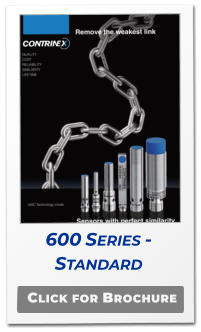
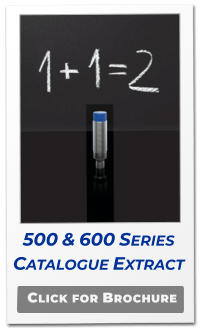
600 SERIES INDUCTIVE SENSORS -
EXCELLENT PRICE PERFORMANCE RATIO

PRODUCT ADVANTAGES
THE ECONOMIC INDUCTIVE SENSOR FAMILY - EXCELLENT PRICE
PERFORMANCE RATIO
A LARGE VARIETY OF PRODUCT SHAPES AND SIZES
A CHOICE OF SENSING DISTANCES (PLUS THE SISTER 500
SERIES OFFERING FURTHER EXTENDED SENSING DISTANCE
AND THE MINIATURE FAMILY PROVIDING SMALLER SIZES)
DEVIATION IN OPERATING DISTANCE ≤2%
OUTSTANDING TEMPERATURE COMPENSATION
IO-LINK INTERFACE INCLUDED – IDEAL FOR INDUSTRY 4
Contrinex’s 600 Series of inductive sensors offer their
uncompromising accuracy and exceptional reliability at an
economical price. Available in sizes from M8 to M30, plus C44
(40 x 40mm), with optional Ø 6.5 plain and 8 mm square-
section models, the 600 Series is ideal for general position-
sensing and presence-sensing applications in almost any
industry.
Embeddable or non-embeddable variants are available, with
either hard-wired, hermetically sealed connecting cables or
integral metal connectors. Highly repeatable results are
supplied at operating temperatures between -25°C and +70°C
and the included IO-Link interface makes integration to
Industry 4.0 easier and more powerful.

WELCOME TO PLUS AUTOMATION LTD - EXPERTS IN SENSORS,
WE WORK TO HELP YOU SOLVE YOUR APPLICATIONS, IMPROVE MACHINE
PERFORMANCE & RELIABILITY AND REDUCE COSTS USING CONTRINEX’S
EXCEPTIONAL SENSORS - LET US HELP YOU #MAKE SENSE OF SENSORS










